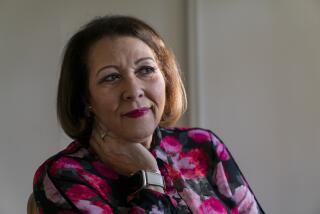Mammogram guidelines fail to persuade women
- Share via
Mammography guidelines are still not well followed despite many years of public-health campaigns to bring the issue into prominence. According to new survey data, only about half of eligible U.S. women are getting annual mammograms -- even if they have insurance to pay for the exam.
In a study presented Thursday at the annual meeting of the San Antonio Breast Cancer Symposium, researchers examined insurance claims from a database of 12 million people, all of whom had employer-provided insurance or Medicare. Fifty percent of eligible women had a mammogram in any given year, and only 60% had two or more mammograms over four years.
Prior studies also have shown that compliance rates for mammography screening are low. But many of the previous studies found somewhat higher rates than those in the new analysis, said the lead author of the study, Dr. Milayna Subar, vice president and national practice leader for oncology for Medco Health Solutions Inc.
“It seems we are not doing better and may, in fact, be doing worse,” she said. “These data are surprising in that we still have a problem in spite of all of the information being disseminated out to women.”
Experts profess confusion about why women are not getting mammograms when they are so highly promoted. It may be because women find the test uncomfortable or don’t have easy access to a screening center or because of costs. Denial is another factor. Some women may think they will never get breast cancer (although the lifetime risk for the disease for all women is one in nine) or may fear the results.
It’s possible that women are confused over the guidelines. One year ago, the U.S. Preventive Services Task Force announced new recommendations suggesting that many women didn’t need an annual exam. Under those guidelines, most women ages 50 to 74 are advised to have routine screening every other year, and women 40 to 49 are told to discuss their individual risk with their doctors before deciding to have an exam. The American Cancer Society, however, still recommends annual mammography beginning at age 40.
The Preventive Services guidelines generated significant protest from women and doctors, Subar noted.
“There was a loud outcry. We heard, ‘Don’t take away my right or ability to have a mammogram regularly.’ ” But, she said, “there could be some confusion about what to do. Guidelines are not all the same. It’s possible women are saying, ‘What should I do?’ ”
The Medco data were drawn from 2006 through 2009, which preceded the effects of the new Preventive Services Task Force guidelines.
It may be that women are just not carving out the time for their exam, Subar said.
“We are all very busy,” she said, “and we need to make sure we put it on our calendars on a regular basis.”
The San Antonio Breast Cancer Symposium is an international scientific symposium on breast cancer by the Cancer Therapy & Research Center at the University of Texas Health Science Center in San Antonio and the American Assn. for Cancer Research.
Related: A panel’s view that mammograms aren’t needed for women under 50 is attacked.
Return to Booster Shots blog.






